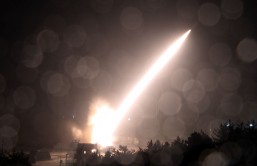Some awesome images relayed by NASA's Juno spacecraft have shown Jupiter's north pole as well as auroras in its southern pole.
"It looks like nothing we have seen or imagined before," said Scott Bolton, Juno's principal investigator. "It's bluer in color up there than other parts of the planet, and there are a lot of storms."
Juno came close to the largest planet in early July, ending a nearly five-year journey, passing intense bands of radiation. Juno manoeuvred the first of three dozen flybys around the planet on 27 August. It dipped to just 2,500 miles above the clouds, which was the nearest that a spacecraft could reach.
Bolton said that the images from the planet's poles were "hardly recognizable as Jupiter". While they seemed to show "signs that the clouds have shadows", they might be above other features, such as weather and storms, unlike the system's gas giants, such as Saturn, Uranus and Neptune.
"Saturn has a hexagon at the north pole," Bolton said. "There is nothing on Jupiter that anywhere near resembles that. The largest planet in our solar system is truly unique. We have 36 more flybys to study just how unique it really is."
Even as belts and clouds around Jupiter's equator have been visible for a long time, Juno shows a totally different system. There are stormy storms like hurricanes that "move clockwise and counterclockwise" in the poles.
Photographs and six megabytes of data were sent to the Earth in a day and a half. An instrument called Waves could record radio signals from Jupiter's auroras, or emissions of the high-energy particles creating the lights. Following this, they shifted them to a more audible range.
So you hear "eerie wails, dotted by static, that shift in pitch with the intensity of the auroral waves and sound as if they were made by some ghostly undersea creature."
"Jupiter is talking to us in a way only gas-giant worlds can," said Bill Kurth, a team researcher based at the University of Iowa, Iowa City. "These emissions are the strongest in the solar system. Now we are going to try to figure out where the electrons come from that are generating them."
The infrared mapper of the spacecraft could show what was "under Jupiter's skin", said Alberto Adriani, a researcher from Rome's Institute for Space Astrophysics and Planetology. "The infrared images revealed previously unknown warm and hot spots, Ariani said, and a surprisingly clear first image of Jupiter's southern aurora."
The infrared mapper also shows bands of clouds moving in a fiery glow. Due to the positioning, this southern aurora is just about visible from the earth. "No other instruments, both from Earth or space, have been able to see the southern aurora," he said. "We see that it appears to be very bright and well-structured. The high level of detail in the images will tell us more about the aurora's morphology and dynamics."
There will be 36 more passes that will be made by Juno around the planet. Finally, the spacecraft will sink into obscurity.
YouTube/UFOvni2012








